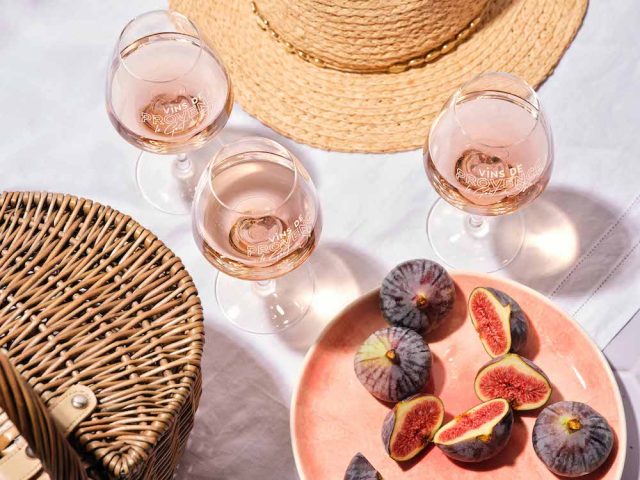This website uses cookies so that we can provide you with the best user experience possible. Cookie information is stored in your browser and performs functions such as recognising you when you return to our website and helping our team to understand which sections of the website you find most interesting and useful.
Vins de Provence: leading the way
Though often imitated, Provence rosé still enjoys a unique cachet. How did a local wine from the South of France become a global icon?

Think of Provence rosé, and a certain lifestyle comes to mind: blue skies, fine food and gatherings with friends. It is an image built on a reputation of highquality wines and decades of expertise. Although pale, dry and versatile rosés are now made in many regions across the globe, this patch of southern France stands apart. With its unique combination of climate, terroir and winemaking prowess, Provence proves that not everything can be imitated.
A clear focus helps. Unlike most wineproducing regions, rosé is not an afterthought or a side project. Across three AOPs – Côtes de Provence, Coteaux d’Aix-en-Provence and Coteaux Varois en Provence – the region produced more than 150 million bottles of rosé in 2022. That represents 90% of the area’s total output, a rarity given that most regions focus on red and white wines.
That focus is not an accident. The blue skies and warm days that are perfect for sipping Provence wines are also perfect for creating them. Low rainfall keeps grapes healthy, while the warm Mediterranean climate enables reliable, steady ripening. Both altitude and exposure to the sea bring cooling winds throughout the region, which maintain freshness in the vineyard. Taken together, these factors allow for a healthy crop, ripe skins and bright acidity, and mark out the Provence climate as ideally suited to rosé.
Terroir is vital too. The beautiful landscapes, renowned for their pristine coastline and rugged, hike-worthy hills, are as suited to rosé winemaking as to holidaymaking. The region is marked by undulating terrain, providing a wide range of conditions. From the seaward vineyards of La Londe to Alpine foothills further north, Provence offers a wide range of sites that can be blended in its elegant rosés. The combination of terroir and grape varieties – mainly Grenache, Syrah and Cinsault, but also local varieties such as Mourvèdre, Carignan and Tibouren – offers countless variables to producers. With so many options, there is distinct nuance even within the region’s signature style.
With such a natural advantage, producers have spent the last 50 years finessing their methods. The journey began with the first appellation, Côtes de Provence AOP, which was recognised in 1977 and spearheaded quality improvements. Today’s cutting-edge research is conducted at the Centre du Rosé, the world’s only facility dedicated to rosé research and development. Across the three appellations, winemakers match method to the region’s style, sensitively using techniques such as cold maceration, direct pressing and night-time harvesting. As new challenges emerge, they continue to be world leaders in rosé production. The appellations are calling for all Provence vineyards to have environmental accreditation by 2030, encouraging biodiversity and pioneering alternative varieties in a warming climate.
Vintage after vintage, against fierce competition, producers prove that nowhere makes wine like Provence. These fresh, complex, textural wines have become synonymous with quality rosé – the unique product of a special region.
Find out more at: www.vinsdeprovence.com

